The flat material used on this robot is flattened PVC pipe, the same stuff seen in the background.
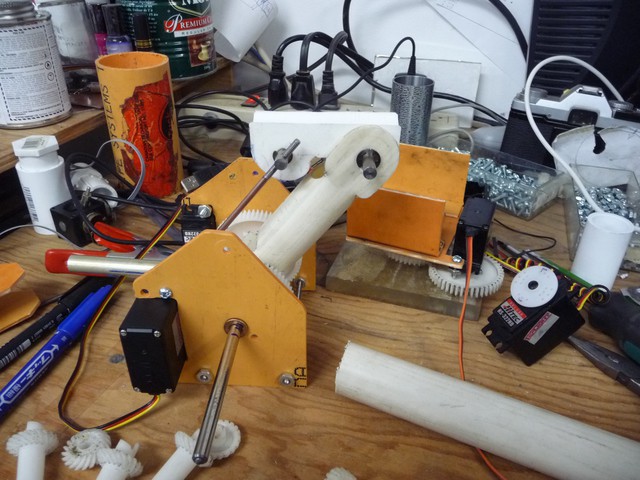
Here is a closeup of how the lower arm is driven. The left gear is fixed directly to the arm segment, but is free of the shaft. The right gear is fixed to the shaft (see pin on right) and operates the lever arm in the middle which is also fixed to the shaft.
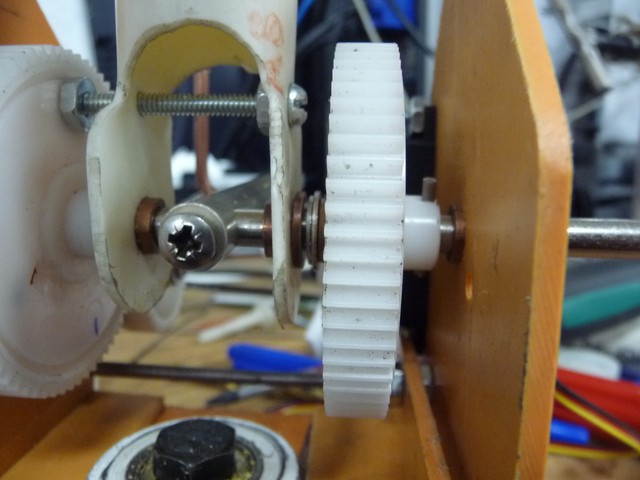
The motors are kept back to the base as much as possable to keep the arms weight down.
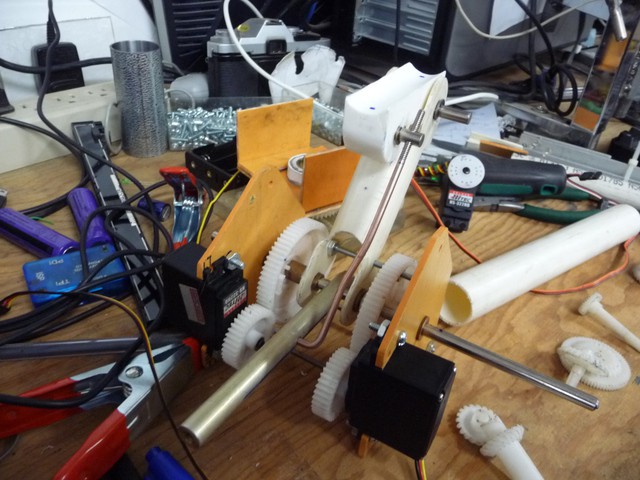
The rod out the back will be used for counterweighting.
The upper arm segment is 1/2" pvc pipe
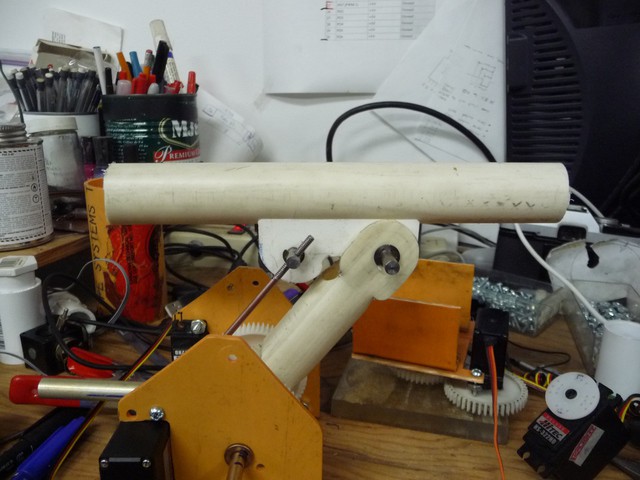
Here I'v mounted the upper arm to the base. The wrist pitch and twist goes togethor next. Motors will go on the back end of the arm to counterweight the gripper end.
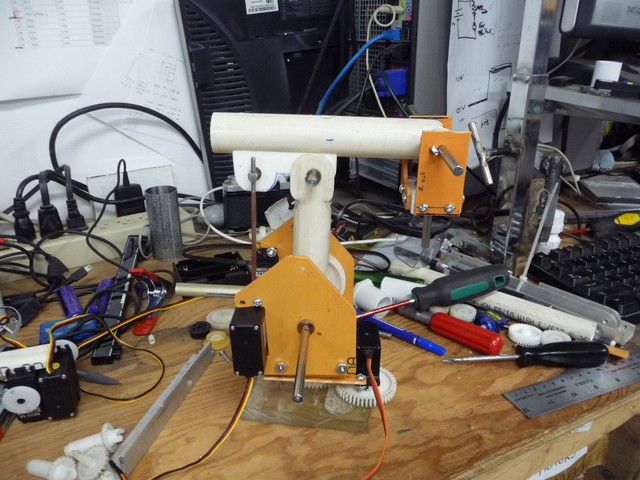
The forearm is attached with a new trick, the screw is down in the pipe, with a hole above it big enough to fit the screwdriver.
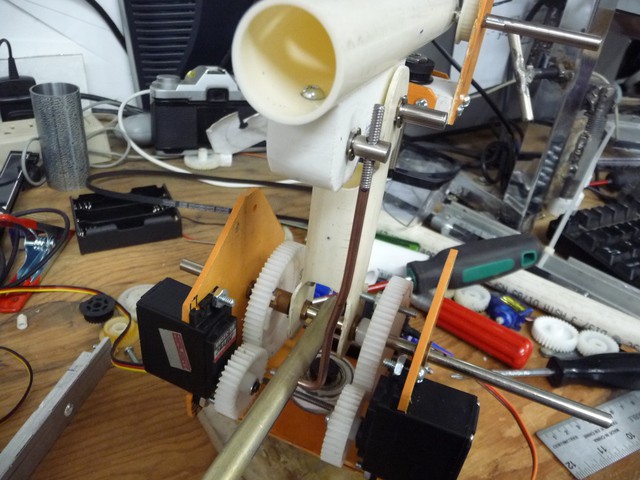
I wanted to use bevel gears for operating the twist, but didn't have any that would work for this, so I tried something new, and used a synchrobelt with some pullies, its a bit stiffer than gears would be, oh well.
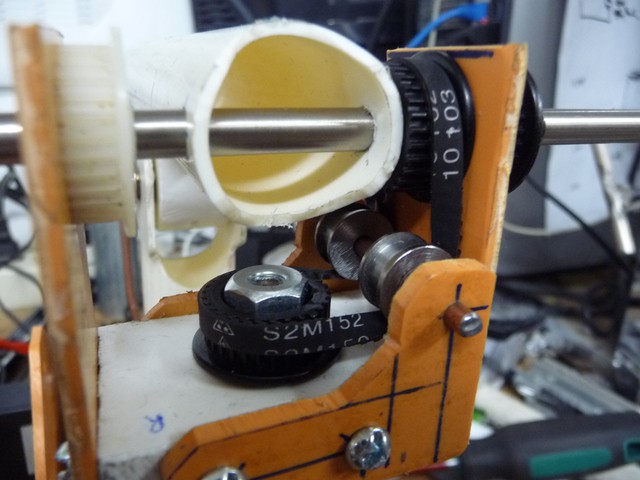
I thought I has some suitable pullies, but the centre holes were wrong, so these ones are custom done on my lathe.
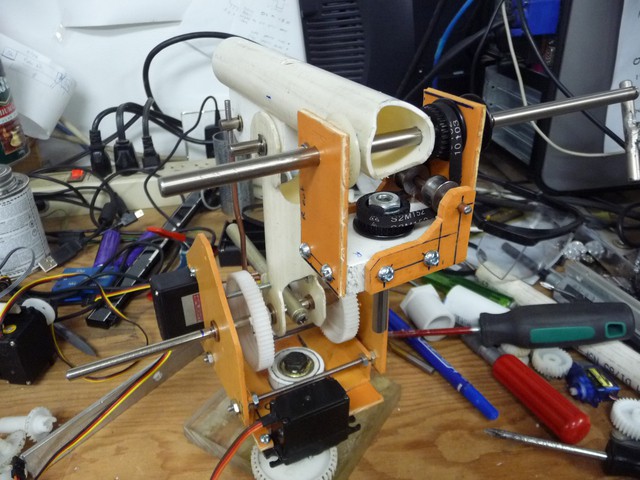
If there is one thing I'v learned, its to cut the shafts short at the end of the project.
Here is a better shot of the base 'stack', the bottom gear is fixed to the base.
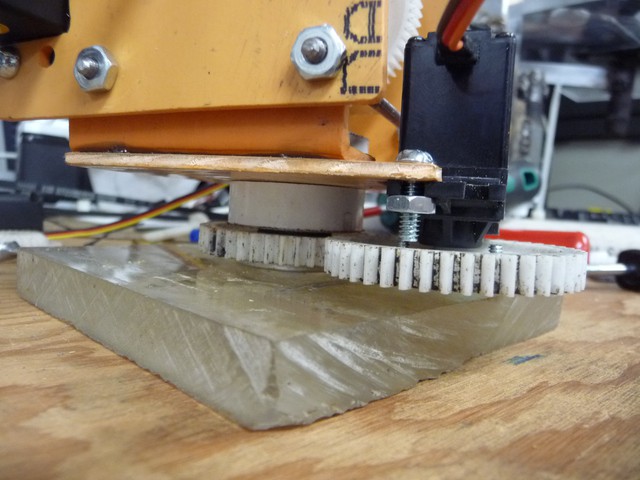
Robot arms should not teeter on the shaft of a servo!
Next comes the gripper. I like parallel jaw grippers, and I was considering doing this like an armatron, but didn't want to deal with so many peices, I also wanted something small.
This idea came to mind. These fingers slide along rails, linkage wires go to either end of the servo horn, with the right linkage wires, they will meet in the middle.
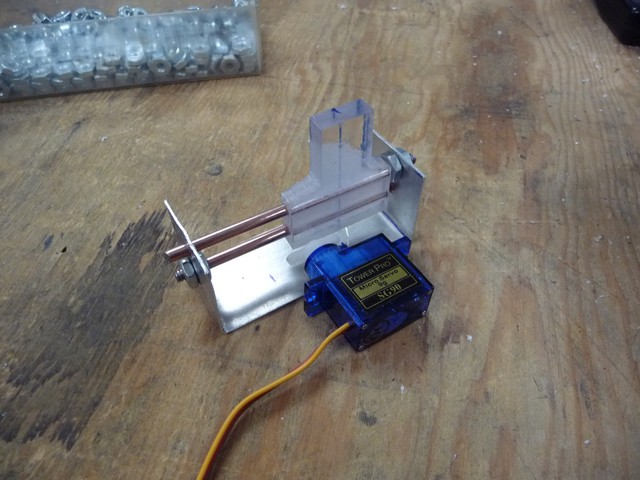
rebuilding the bracket to accomidate the servo plus a bit of artistic angles, and bingo
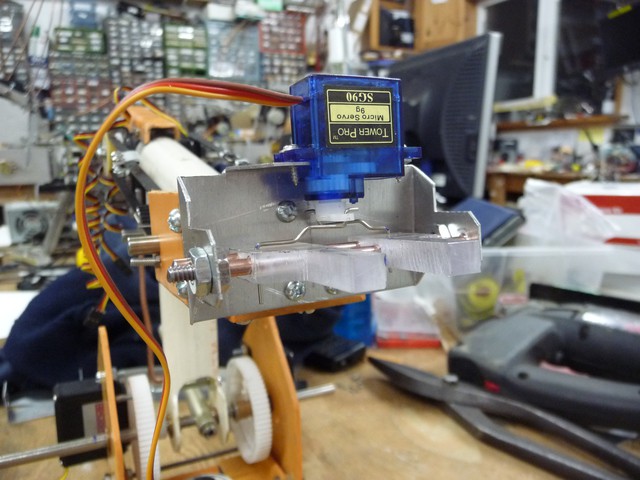
The nice thing about pvc is that it can be glued really easy, Here I'v come up with a bracket to hold the upper motors. I didn't even worry about belt length, the whole span of the belt isn't being used and I can have a linkage in it.
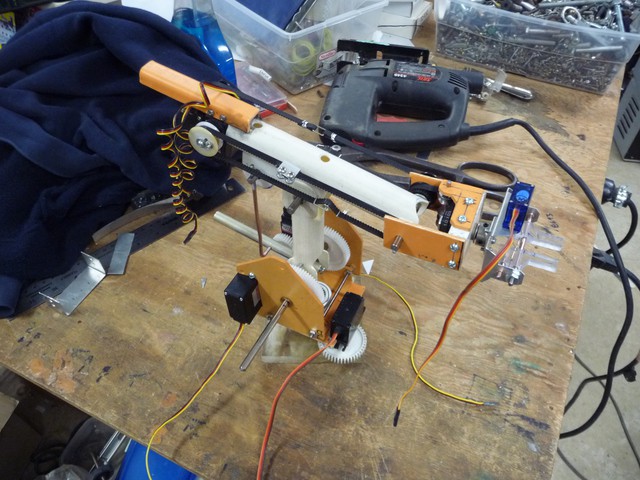
I suggest the linkage style used on the back belt, the method used in the front one is just a pain.
a clothespeg spring works to keep the belt tight.
Next I have to mount it to a base and put in all teh counterbalance weights and springs....
 Rue Mohr
Rue Mohr
Discussions
Become a Hackaday.io Member
Create an account to leave a comment. Already have an account? Log In.